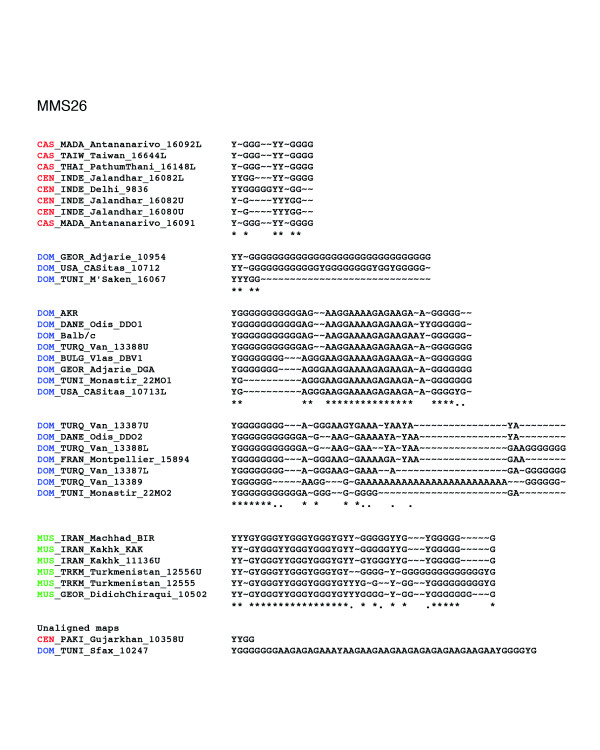Figure 3.

Maps of the internal structure of variant repeats for mouse minisatellite MMS26. Groups of similar haplotypes were chosen arbitrarily for the purpose of illustrating the maps' complexity. The groups correspond to clades in the trees of Figure 7. Their maps were aligned with the multiple alignment procedure MS_Alimul (E Rivals, unpublished) and the alignments edited manually. Under an alignment column, an asterisk indicates a complete conservation, while a period means that 60% of the variants in the column are identical. The alignments show which type of mutations occur between alleles, and where corresponding differences are located in the maps. For comparison, we also display for each locus one of the shortest and one of the longest or most complex alleles. Color code: spretus, orange; domesticus, blue; castaneus/cen, red; musculus, green.
